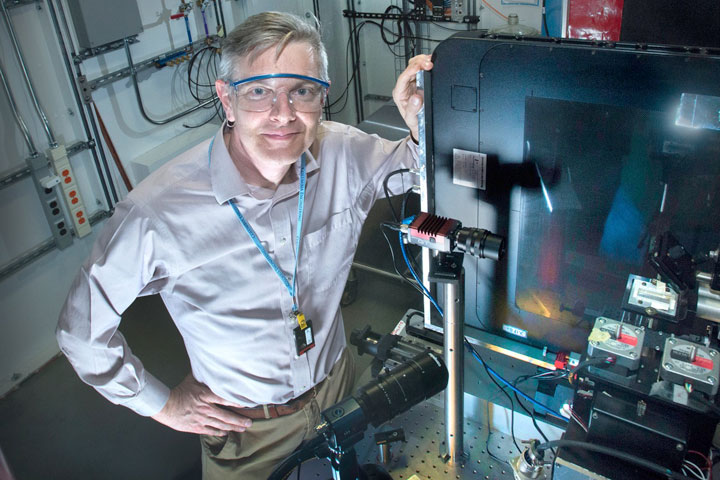Brookhaven lab study explores nanoscale structure of thin films
The world’s newest and brightest synchrotron light
source—the National Synchrotron Light Source II (NSLS-II) at the U.S.
Department of Energy’s Brookhaven National Laboratory—has produced one of the
first publications resulting from work done during the facility's science
commissioning phase.
(NSLS-II) at the U.S.
Department of Energy’s Brookhaven National Laboratory—has produced one of the
first publications resulting from work done during the facility's science
commissioning phase.
The paper [Jensen et al. (2015). IUCrJ, 2, doi: 10.1107/S2052252515012221] discusses a new way to apply a widely used local-structure analysis tool—known as atomic pair distribution function (PDF) analysis—to x-ray scattering data from thin films, quickly yielding high-quality information on the films' atomic structure. The work creates new avenues for studies of nanocrystalline thin films.
PDF provides local atomic structural information or in other words, data for neighborhoods of atoms, by yielding the distances between all pairs of atoms in the sample. These distances appear as peaks in the data. In recent years, PDF has become a standard technique in structural studies of complex materials and can be used for samples that are bulk or nanoscale, amorphous or crystalline.
The approach that Billinge and his colleagues devised leverages the high fluxes of photons coming from NSLS-II, which, together with novel data reduction methods recently developed in his group, creates data suitable for PDF analysis from a thin film. Essentially, it turns the standard grazing incidence experiment on its head: the beam is simply sent through the film from the back to the front.
The first sample studied was an amorphous iron-antimony film on an amorphous borosilicate substrate mounted perpendicular to the x-ray beam. In order to isolate the contribution from the film, the substrate contribution was first determined by measuring the scattering pattern from a clean substrate. The signal from the film is barely visible in the raw data on top of the large substrate contribution, but could be clearly extracted during data processing. This allowed for a reliable, low-noise PDF that can be modeled successfully to yield the quantitative atomic structure of the film.
The data led to high-quality PDFs for both amorphous and crystalline films—confirmed by comparison to control samples in a standard PDF setup. Based on the success of these first measurements, the Billinge group and the XPD team are now planning future experiments to watch the films crystallize in real time, in the beam.
This work shows that NSLS-II—a DOE Office of Science User Facility with ultra-bright, ultra-concentrated x-ray beams—is already proving to be a game-changer in studies of thin films, which play a vital role in a large number of technologies, including computer chips and solar cells.
This article is reprinted from material taken from Brookhaven National Laboratory, with editorial changes made by IUCr.


